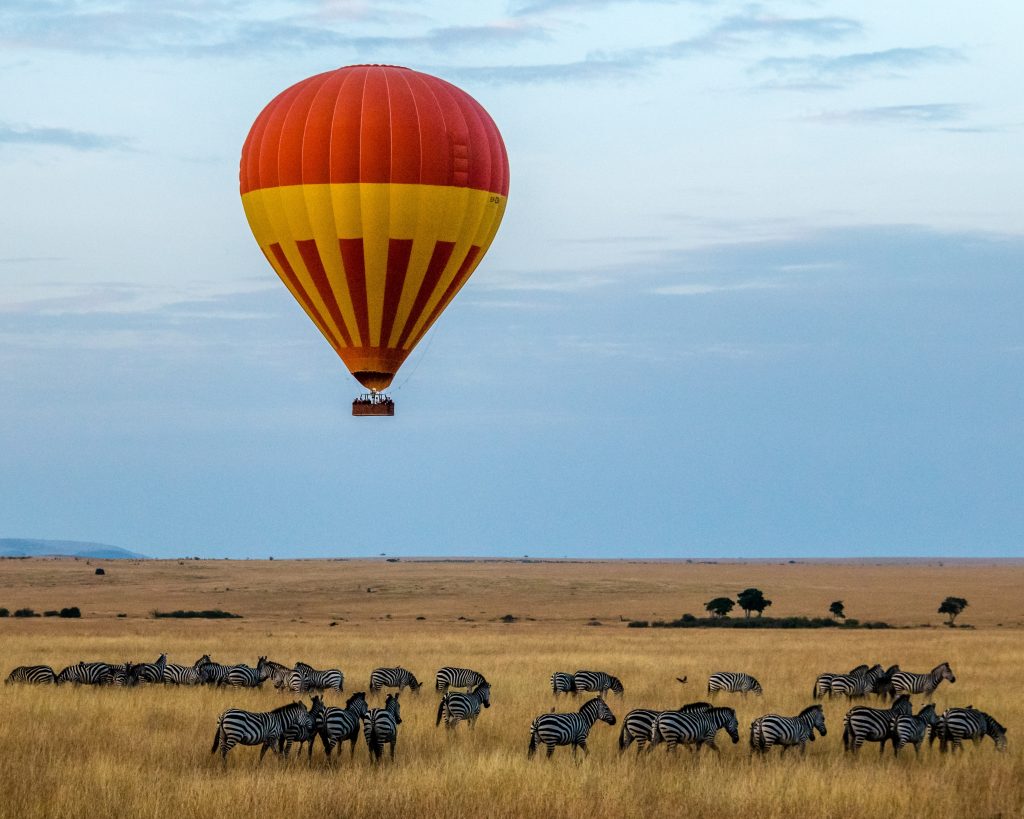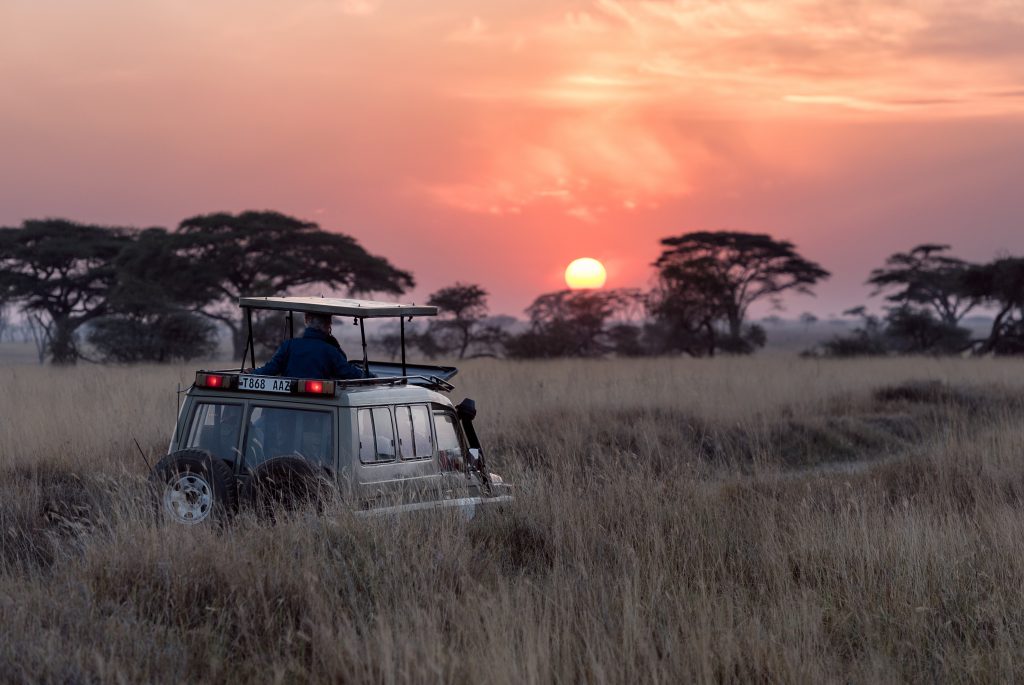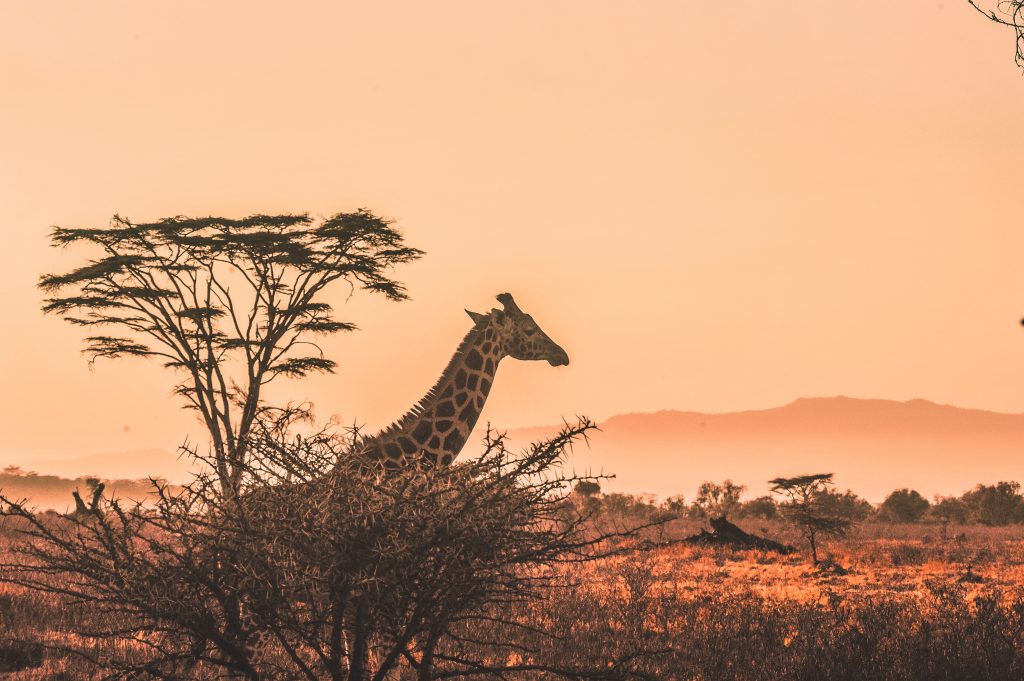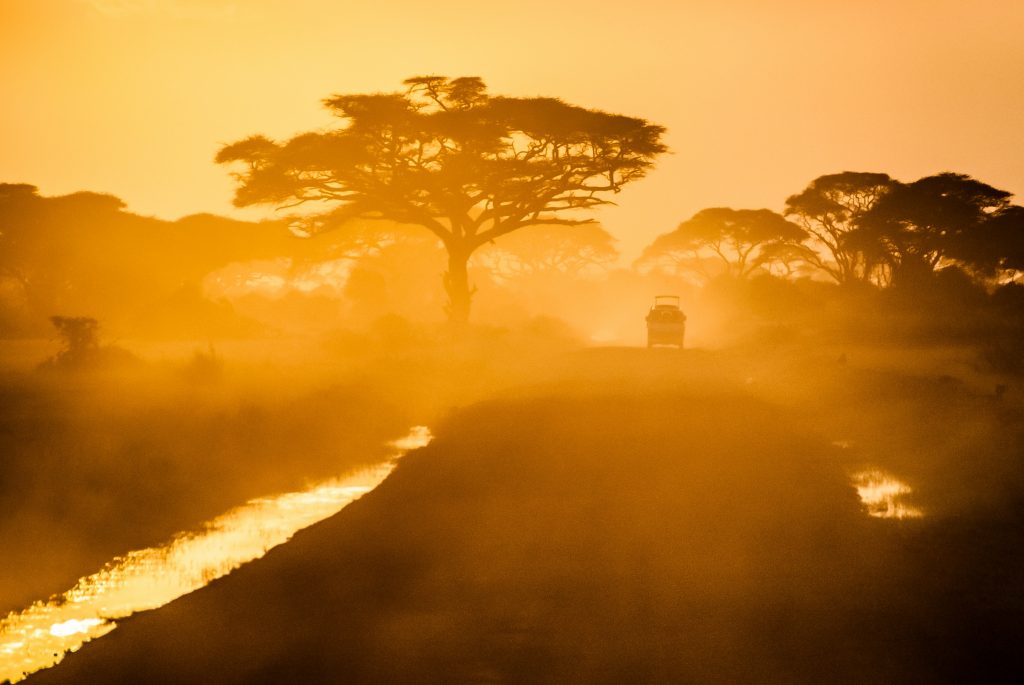South Africa continues to enjoy the tremendous goodwill of holidaymakers worldwide. While travel to most long haul destinations declined last year, this country experienced an enviable 6.5% growth, according to the World Tourism Organisation.

On Safari in South Africa
The growth was jump started by the transformation heralded by the demise of apartheid and onset of democratic rule in 1994. Apartheid polices of racial discrimination protected by law greatly offended enlightened opinion in many parts of the world. And the enemies of these policies launched a very effective campaign against visiting South Africa. So it came to be that South Africa, a truly superior destination by any standards, remained hidden to many until the dark cloud of apartheid blew over.
The wildlife safari is a key item on the South Africa tourist menu. Those who chose to see Africa’s wildlife here will not be disappointed. The game viewing experience is excellent at the top rated Kruger National Park and at other well-regarded game parks in the country. Wildlife is protected in over 300 public and private game and nature reserves. SANParks (South African National Parks) manages 20 national parks spread throughout the country.

Kruger is the place to see big game particularly the “big five” of buffalo, elephant, lion, leopard and rhinoceros. Most of the other parks have specialised in conserving particular species or are identified with specific animals. The Greater Addo National Park, for example, is the only place you find elephants in the Cape region. Some of the parks along the 3000 km coastline host whales and dolphins.
South Africa’s wildlife conservation policies are advanced and highly successful. An initiative targeting wildlife sanctuaries cutting across international boundaries hopes to replicate this success elsewhere. This is in recognition of the fact that wildlife is no respecter of territorial lines covenanted between men. Transfrontier conservation areas have been identified in six regions along the boundaries with Lesotho, Swaziland, Zimbabwe, Namibia, Botswana and Mozambique.

In South Africa, the best places to see wildlife is at private game reserves and national parks. Private game reserves are not as expansive as the publicly owned national parks. Their key selling point is the superior accommodation and ranger escorted personalized tours. The national parks on the other hand are popular with self-drive tourists. They offer accommodation in a limited number of enclosed rest-camps, in thatched rondavels, bungalows and chalets. Tour companies also offer packages, including transport and guide in the national parks. See our South Africa Tours page to view info and book one of our package safari offers.
South Africa is home to numerous species of land animals, including the celebrated “big five” – rhino, buffalo, lion, leopard and elephant. Most members of the big five league are undoubtedly charismatic. But this is not the reason they are so named – otherwise I would petition that the buffalo be ejected. The reason is that these are the animals the early safari hunters found most challenging. The idea of viewing game without killing had not gained widespread acceptance then. The arrogant practice of killing animals as a sport is very unpopular today with those who value the right to life and dignity of animals as full members of our planet.

In addition to the disagreeable aesthetics, hunting brings about a bad relationship between man and the animals. I will illustrate this with an incident narrated to me by a guide on a recent visit to a country (not South Africa) that allows hunting. The guide recalled an occasion when he was taken by surprise to see an elephant charging at his vehicle. This was contrary to his experience with elephants in that region. This unusual behaviour arose because hunters had wounded the elephant. The elephant hereafter dealt with vehicles and humans as enemies. It is regrettable that South Africa’s otherwise stellar conservation policies, allow the practice of hunting in certain areas.
Game viewing is usually done from the comfort of a vehicle but walking, horseback, camel and canoeing safaris are increasingly becoming popular. If you wish to view game in any of these modes, it is required that you be accompanied by an armed ranger. Full blood adventure types think that watching game aboard a vehicle is for wimps. Walking safaris are designed for such hardy souls. And it is the reason that the thoughtful folks at SANParks maintain a network of wilderness trails in the parks. The typical walking safari will have a maximum of eight persons with ages ranging from 12 to 60 years and last for 2 nights and 3 days. Participants must obviously be physically fit.
Without doubt, the best place to see wildlife, especially the “big five” is Kruger National Park. This is the flagship of South Africa’s national parks. The Kruger was created in 1898 and owes its existence to the vision of Paul Kruger at one time president of the Transvaal Republic that later became part of the Union of South Africa. He was ahead of his time in recognizing the need to create a sanctuary to preserve and protect wildlife. Even at that time it was clear that the hunter with his rifle would soon annihilate all the animals.
Kruger offers a diversity of animals unrivalled anywhere else in South Africa. In addition to the big five, some of the interesting game you find here include – hippo, jackal, giraffe, zebra, buffalo, warthog, numerous antelope species, cheetah, wild dog and spotted hyena. The park is home to more than 140 mammal and 500 bird species. Kruger spreads over nearly 20, 000 sq km of unspoilt scrubland punctuated by acacia and mopane trees. The botanic biodiversity is vast and over 336 tree species are found here.
Accommodation within Kruger is provided at self-catering rest camps that offer good but basic lodging. There are also some smaller bush lodges and bushveld camps offering more luxurious stay. Accommodation ranges from rondavel huts and safari tents to family bungalows and cottages and luxury guesthouses. In addition, there are caravan and tent camping sites at some of the rest camps. Most of the camps are supplied with electric power and telephone. Other facilities include shops, kitchen facilities, restaurants and petrol stations.
Kruger has 3,000 kilometers of a well-maintained road network and is ideal for those seeking a self-drive experience. The park is relatively inexpensive and easily accessible. It is therefore hugely popular and draws over 600,000 visitors annually. It in particular gets very crowded over the school holidays in July and December. Since there are a maximum number of vehicles allowed into the park daily, you are well advised to make advance arrangements if you plan to visit then. Game viewing is good year round, but the best time will be from April to September when the bush is sparse.
Kruger is located 330 km to the northeast of Johannesburg. If you have no stomach for a long drive, take one of the daily flights from Johannesburg to Phalaborwa Airport, Hoedspruit Airport or Kruger/Mpumalanga International Airport. If you wish to rent a car at either Durban or Johannesburg, visit our South Africa Car Rental page for your reservation. Towards the western and southern sides of Kruger National Park, there are a number of highly rated private game reserves. This includes Sabi Sand, Mala Mala, Londolozi and Timbavati game reserves. Here you will find some of the finest game lodges in Africa.
The Kgalagadi Transfrontier Park is another unique game sanctuary. This huge park is a combination of the two parks -the former Gemsbok National Park in Botswana and Kalahari Gemsbok National Park in South Africa. Covering over 36,000 sq km, it is one of the biggest wildlife conservation areas anywhere in the world. The landscape is marked by red sand dunes and sparse thornbush vegetation. The environment of this park provides outstanding opportunities for unforgettable wildlife photos.
This park is host to the famous black-maned Kalahari lions. You will also see gemsbok, springbok, eland, blue wildebeest, cheetahs, wild dogs, jackals, bat-eared foxes and leopards. Birding is also excellent and of 297 species recorded, 96 are resident. The Kgalagadi is not for the fainthearted -it is far from anywhere and getting there is a slog. It is located 904 km to the west of Johannesburg. All accommodation in the park is managed by SANParks. You will get the best experience if you visit between June and July when the weather is coolest.
On safari, remember to carry a pair of binoculars to help you spot animals. Also carry a camera and other equipment as a means of recording your safari. It is the only way to shut up those who doubt the story of your encounter with the African wildlife. Carry along a decent pair sunglasses to shield you from glare, especially if you travel to the semi desert Kgalagadi. Dressing well means cool clothing (such as light cottons and linen) for summer and warm for winter.

